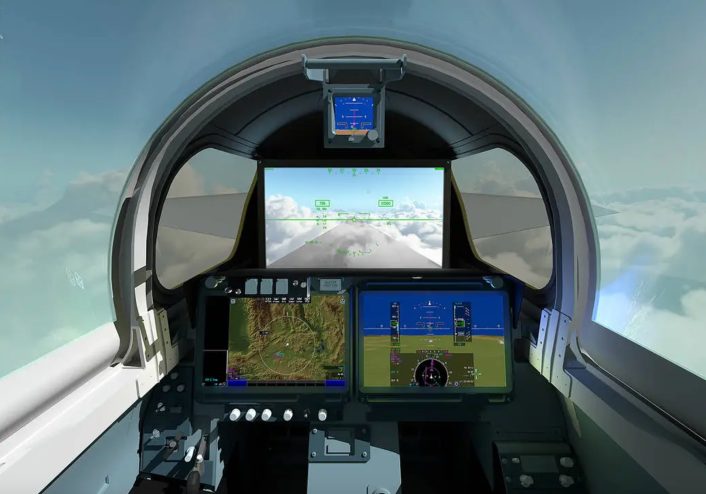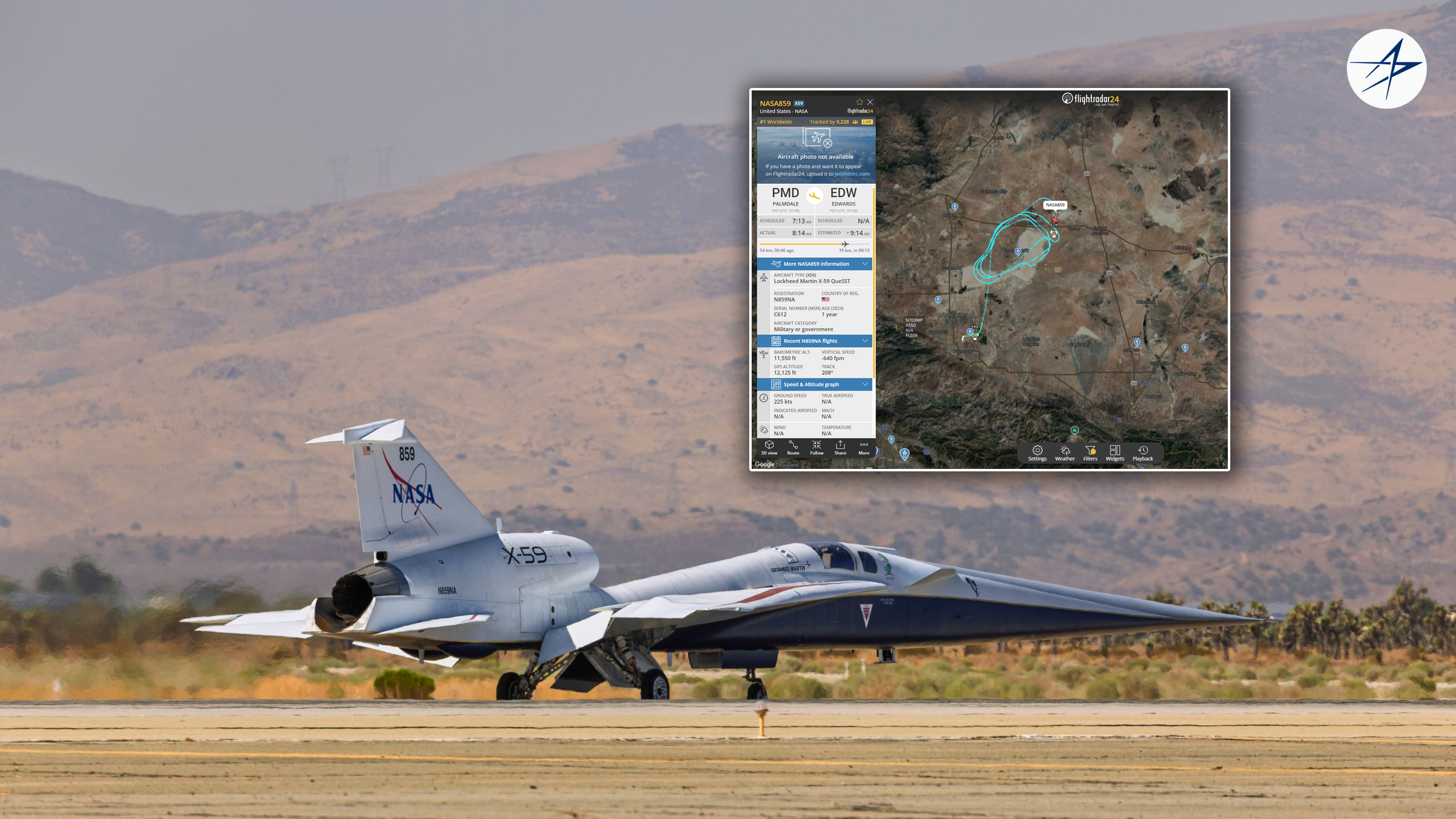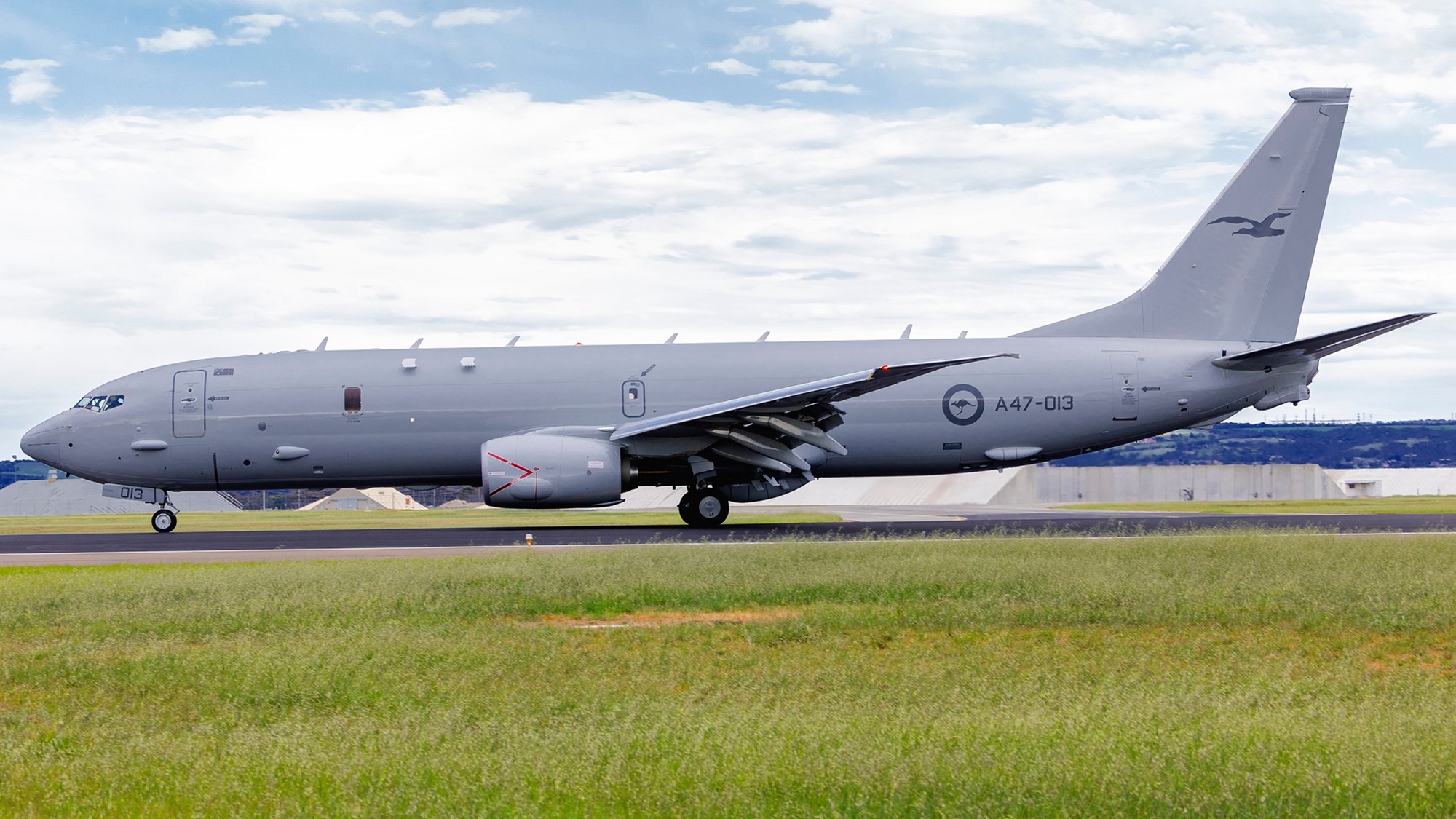After a few failed attempts, NASA’s X-59 QueSST first flew from Air Force Plant 42 in Palmdale on October 28, 2025.
In a historic milestone for aeronautical research, NASA’s experimental X-59 QueSST (Quiet Supersonic Technology) made its maiden flight today. The aircraft, designed and built by Lockheed Martin’s Skunk Works at Air Force Plant 42 in Palmdale, California, will be used to pave the way for the return of supersonic aircraft.
The sortie was planned to check critical onboard systems, as well as to verify system integration, handling qualities, avionics and instrumentation. The first flight also allows the new aircraft to move from Palmdale to NASA’s Armstrong Flight Research Center at nearby Edwards Air Force Base. After takeoff, the plane quickly rose to the top of Flightradar24’s “most tracked” aircraft list with tens of thousands of people following the inaugural flight.
Airborne! He @POT The X-59 QueSST makes its first flight. The aircraft is uniquely shaped to fly supersonically without producing a loud sonic boom. https://t.co/PWWsFcLJsk pic.twitter.com/d6vJMI5Hta
— Flightradar24 (@flightradar24) October 28, 2025
This milestone now marks the transition from ground testing to airborne operations in NASA’s push toward silent supersonic flight. Data collected from X-59 flights will help the FAA and international regulators evaluate possible changes to existing rules that currently prohibit civil supersonic flights over land.
GO, GO, NASA X-59! First Flight!!!!! pic.twitter.com/Ykeq2FNZZr
– Matt Hartman (@ShorealoneFilms) October 28, 2025
In fact, the FAA is preparing to replace the decades-old ban with new noise-based certification standards. This follows the White House’s June 2025 executive order that directed the FAA to repeal the ban on allowing supersonic overland flights for civilian aircraft.
On October 27, the QueSST was named 2025. ‘The coolest thing made in California’.
X-59 is wild! pic.twitter.com/xnvINT8UX4
— jmh.creates (@JarodMHamilton) October 28, 2025
Going to the first flight
From the beginning, the mission was designed to stay comfortably within subsonic limits. Instead of chasing speed or altitude records, the emphasis was on verifying system integration, handling qualities, avionics, instrumentation and structural behavior under real aerodynamic loads.
NASA had already said last month that the first flight would take the form of a lower altitude circuit at about 240 mph (210 knots) and would reach about 12,000 feet, lasting approximately one hour. The test team is mapping every step from taxi and takeoff to cruise and landing, and during subsequent test flights, the X-59 will go higher and faster, eventually surpassing the speed of sound.

During the first and subsequent flights, the X-59’s Flight Test Instrumentation System (FTIS) will collect and transmit audio, video, onboard sensor data and avionics information. The pilot and ground crew will also monitor engine response, aerodynamic handling, control authority, air data systems, telemetry integrity and system redundancy.
“We recorded 60 different data streams with more than 20,000 onboard parameters,” said Shedrick Bessent, NASA’s X-59 instrumentation engineer. “Before even taking off, it’s comforting to know that the system has already been through more than 200 days of work.”
Security measures
Behind the X‑59’s advanced systems is a dedicated team of engineers, technicians, and safety and quality control experts. Central to this team is the crew chief, responsible for maintaining the aircraft and ensuring it is completely ready to fly.


“I always try to go up and shake the crew chief’s hand,” Nils Larson, NASA’s X-59 chief test pilot, previously said. “Because it’s not your plane, it’s the crew chief’s plane, and they’re entrusting it to you. You just borrow it for an hour or two, then you bring it back and hand it over.” For the first flight, NASA said Larson would borrow the plane from Lockheed Martin’s Matt Arnold and NASA’s Juan Salazar.
The X‑59 is equipped with multiple systems specifically designed to protect the pilot. His life support system supplies oxygen to compensate for low atmospheric pressure at altitudes around 55,000 feet, while also powering Larson’s G-suit. As an additional safety feature, the aircraft features an ejection seat and a canopy adapted from a US Air Force T-38 trainer, equipped with essential items such as a first aid kit, radio and water.
“All of these systems form a safety net, adding confidence to the pilot and engineers as we approach first flight,” Larson said. “There’s a lot of trust that comes with flying something new. If the engineers trust the plane and I trust them, then I’m all for it.”
What he achieved
In the words of NASA, the first flight “begins a first phase of flight tests focused on verifying the airworthiness and safety of the aircraft.”
Although modest in terms of performance, the first flight is important for several critical validations. These include engine behavior, control surface responsiveness and authority, stability and handling behavior under anticipated aerodynamic loads.
Other important validations will involve landing, one of the most critical phases of the flight. This is especially true because the X-59 has an elongated nose that makes up one-third of the aircraft’s total length.
The nose is a crucial part of the X-59, designed to control aerodynamic pressure waves, resulting in quieter sonic booms. However, this also reduces visibility, and the aircraft has been fitted with the External Vision System (XVS), which adds a series of cameras that replace a front cockpit window.
Background and preparatory work
The path to escape involved several key steps, as we previously covered here on The aviationist. In January 2024, we reported on the launch of the X-59 at Lockheed Martin’s Skunk Works in Palmdale. Later, in November 2024, we cover the engine test milestone, when the X-59 propulsion system was powered for the first time.
The X-59’s afterburner ignites, illuminating the future of silent supersonic aviation.🔥 pic.twitter.com/Cg0Tf4rHkV
— Lockheed Martin (@LockheedMartin) December 29, 2024
Following launch and engine testing, the program conducted low-speed taxi tests beginning in July 2025, validating steering, braking and ground stability in preparation for flight. Additional ground operations included high-speed taxis until earlier this month.
Regarding modeling, advanced computational approaches were also used to simulate various aspects and systems. Some of these were also tested in real-world conditions, such as the XVS which was tested on NASA’s Beechcraft King Air UC-12B.



